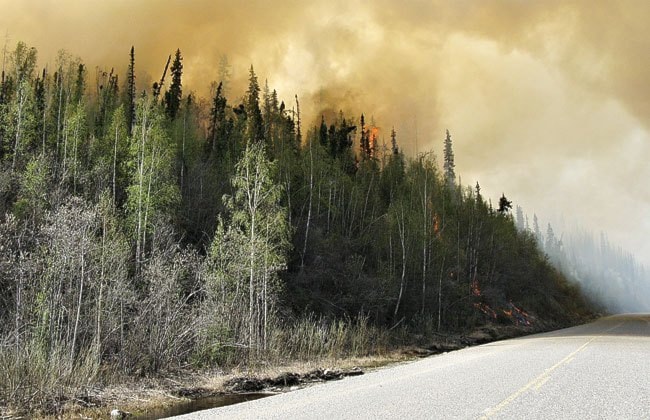Carelessness caused four forest fires over the Victoria Day weekend, prompting fears for the rest of the summer as high temperatures are forecasted for the next weeks.
“Don’t abandon (your campfire), that’s the number one reason behind human-caused starts,” said George Maratos, spokesperson for Yukon Wildland Fire Management.
Three of the fires were in the Whitehorse area - in Tagish, Lake Laberge and Fox Lake - while the fourth was near Haines Junction.
The quick reactions by nearby residents to all four fires allowed firefighters to easily contain them. On Tuesday, only the Fox Lake and Haines Junction fires were still active but fully contained.
In Tagish, the fire was caused by five small bonfires that were abandoned.
“They weren’t even attempted to be put out properly,” said Maratos.
“That’s very, very serious; thankfully they were able to get the helicopter with the bucket of water on it.”
Careless burning, on top of threatening local communities, takes up crucial resources at a time where the territory is under extremely dry conditions, said Maratos.
Eleven firefighters and one helicopter are still working to extinguish a fire near the Klondike Highway north of Dawson City that started last week.
On Tuesday, firefighters had contained the fire to 37.5 hectares.
“At one point (during the week-end) there were some hot spots that had crossed the highway, but (firefighters) were quick to contain it,” said Maratos.
Last year the Yukon sent firefighters to British Columbia, the Northwest Territories and Alaska to help fight a particularly tough fire season under a resource sharing program. This year, the Yukon might be the one calling for help.
Most of the territory is under “phenomenal fire conditions,” according to Maratos. Except for Old Crow, the rest of the territory is under either extreme or high fire danger.
It’s a stark contrast with last year’s fire season, the quietest on record, that saw little to no lightning activity and no record-high temperature.
“It’s gonna be a much different year than it was last year and we’re only in the third week of May,” said Maratos.
While at this time last year there had been five fires burning 0.9 hectares, seven fires have burned 38.6 hectares so far this year.
As about half of each year’s fires are caused by humans and are preventable, residents are asked to be cautious.
Campfires should only be lit at designated fire pits or surrounded by rocks, and they should always be kept at a manageable size, said Maratos.
But more importantly, always make sure to fully extinguish a fire before walking away from it.
“It should be to a point where you can actually put your hand where the fire was,” he said.
Campfires are banned within Whitehorse city limits, and backyard burning requires a burning permit. However, those permits are suspended when fire danger ratings are above the low level, as is the case with nearly the entire territory now.
Yukon Wildland Fire Management and park rangers regularly patrol to check on people making campfires, but ultimately it comes down to the public being responsible and knowing the conditions.
“If a person on their property makes the choice to burn a pile when it’s windy, there is not much we can do at that time,” said Maratos.
Firefighters in British Columbia are also battling a fire that started on Tuesday on the Inklin River about 90 kilometres southeast of Atlin. B.C. Wildfire Management Branch says they expect the fire to grow in the next days while the weather remains dry and hot.
Contact Pierre Chauvin at
pierre.chauvin@yukon-news.com
